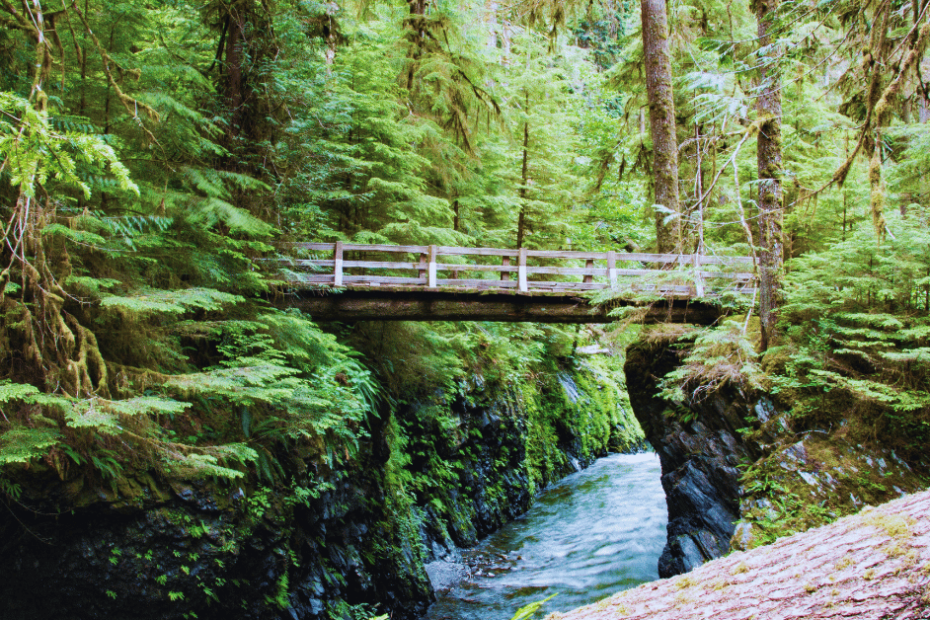Planning a trip to Olympic National Park? You’re in for a treat! This stunning park in Washington state offers diverse landscapes, from lush rainforests and rugged coastlines to towering mountains. Whether you’re an avid hiker, a wildlife enthusiast, or just looking to escape into nature, Olympic National Park has something for everyone.
Key Takeaways
- Diverse Activities Year-Round: Olympic National Park offers a variety of activities across all seasons, from hiking in summer to winter sports at Hurricane Ridge.
- Multiple Access Points: The park is accessible by car, air, or ferry, with key entry points at Port Angeles, Forks, and Aberdeen.
- Entrance Fees: Visitors should budget for entrance fees, which vary by vehicle, motorcycle, and individual passes, with annual pass options available.
- Essential Gear: Packing the right gear, including layers, waterproof clothing, and sturdy footwear, is crucial due to the park’s unpredictable weather.
- Accommodations: Port Angeles and Forks are popular bases for exploring the park, with options ranging from hotels to campgrounds.
- 3-Day Itinerary: A suggested itinerary includes visiting Port Angeles, Hurricane Ridge, Lake Crescent, Sol Duc Hot Springs, Rialto Beach, La Push, and the Hoh Rainforest.
Getting to Olympic National Park
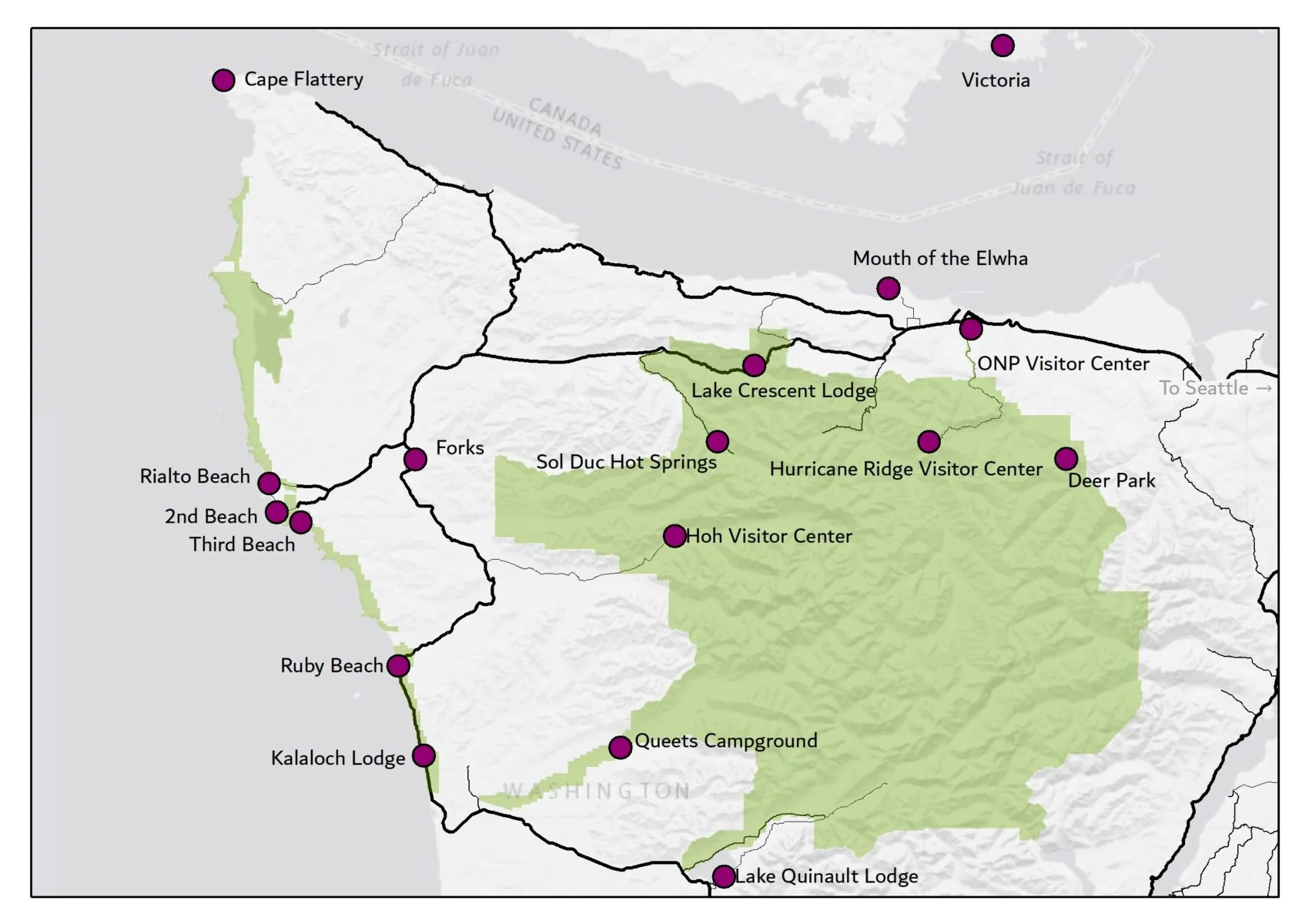
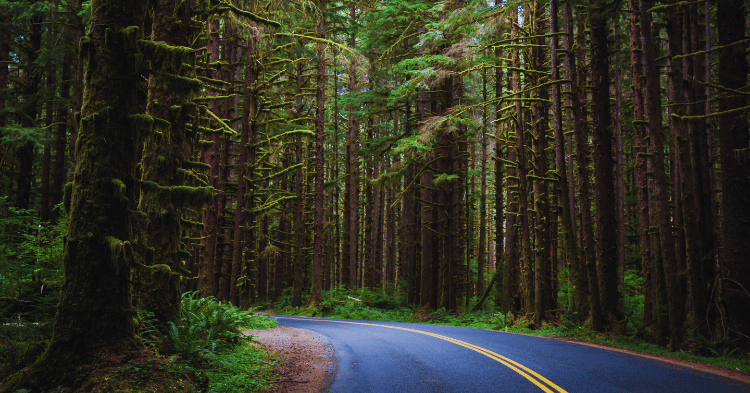
Discovering the rugged beauty of Olympic National Park is an adventure in itself. Here’s how you can make your way to this stunning park.
Best Routes
By Car: Driving is a popular way to reach Olympic National Park. The scenic drive via US Highway 101 offers breathtaking views as it loops around the Olympic Peninsula. Major entry points are Port Angeles, Forks, and Aberdeen, each providing a distinct perspective of the park’s diverse world.
By Air: If you prefer flying, the nearest airport is William R. Fairchild International Airport in Port Angeles, with connections to major cities. Another convenient option is Seattle-Tacoma International Airport, roughly a 2-hour drive plus a picturesque ferry ride to the Olympic Peninsula.
By Ferry: From Seattle, you can embrace the serene ferry ride to Bainbridge Island or Kingston. Once you dock, it’s a short drive through enchanting forested roads to the park, making the journey part of your adventure.
Entrance Fees
Visiting Olympic National Park requires an entrance fee, which helps maintain the park’s natural splendor. Here’s a breakdown of the costs:
| Ticket Type | Price (USD) |
|---|---|
| Vehicle Pass | $30 (7 days) |
| Motorcycle | $25 (7 days) |
| Individual | $15 per person |
| Annual Pass | $55 |
Each pass offers access to all the stunning vistas, trailheads, and unique ecosystems within the park, ensuring your fee contributes to preserving its beauty for future explorers.
Best Time to Visit Olympic National Park

Choosing the best time to visit Olympic National Park really depends on what you want to experience. The park offers diverse activities and stunning scenery year-round.
Summer (Weather and Hiking)
Much like a dream, summer at Olympic National Park is both warm and inviting. With temperatures ranging from 60 to 70°F (15-26°C), it’s the perfect season for hiking. All trails are accessible, and places like Hurricane Ridge offer breathtaking alpine meadows and panoramic views. Don’t miss trails such as Hurricane Hill, Sunrise Point, and Klahhane Ridge. But, summer is also the peak season, so you’ll encounter larger crowds and longer wait times, especially at popular spots like the Hoh Rainforest and Sol Duc Falls.
Fall (Waterfalls and Foliage)
Autumn transforms Olympic National Park into a riot of colors. The foliage is stunning, with golds, reds, and oranges painting the world. Plus, the waterfalls are particularly impressive after the rain’s resurgence. This season offers cooler temperatures and fewer crowds, making it a wonderful time to explore. Plan to visit spots like Maple Glade Trail and the Sol Duc Hot Springs for a truly immersive fall experience.
Winter (Fewer Crowds)
If you crave solitude, winter is the time to visit. The park is serene, and you can enjoy the snowy landscapes almost all to yourself. Although some trails might be closed due to snow, you can still explore lower-elevation areas and partake in winter sports at Hurricane Ridge. Make sure to dress warmly and check trail conditions before heading out. The quiet beauty of winter here is unmatched and offers a different perspective of the park’s magic.
Spring (Greenery and Waterfalls)
Spring breathes new life into Olympic National Park. The melting snow and abundant rainfall rejuvenate the waterfalls, making them a must-see during this season. The greenery is lush and vibrant, offering a refreshing backdrop for your adventures. Expect milder temperatures and fewer visitors compared to summer. Don’t miss the wildflower blooms along trails like the Elwha Valley and Hoh River Trail. Spring is the ideal time to soak in the park’s natural beauty with a bit more tranquility.
Where to Stay
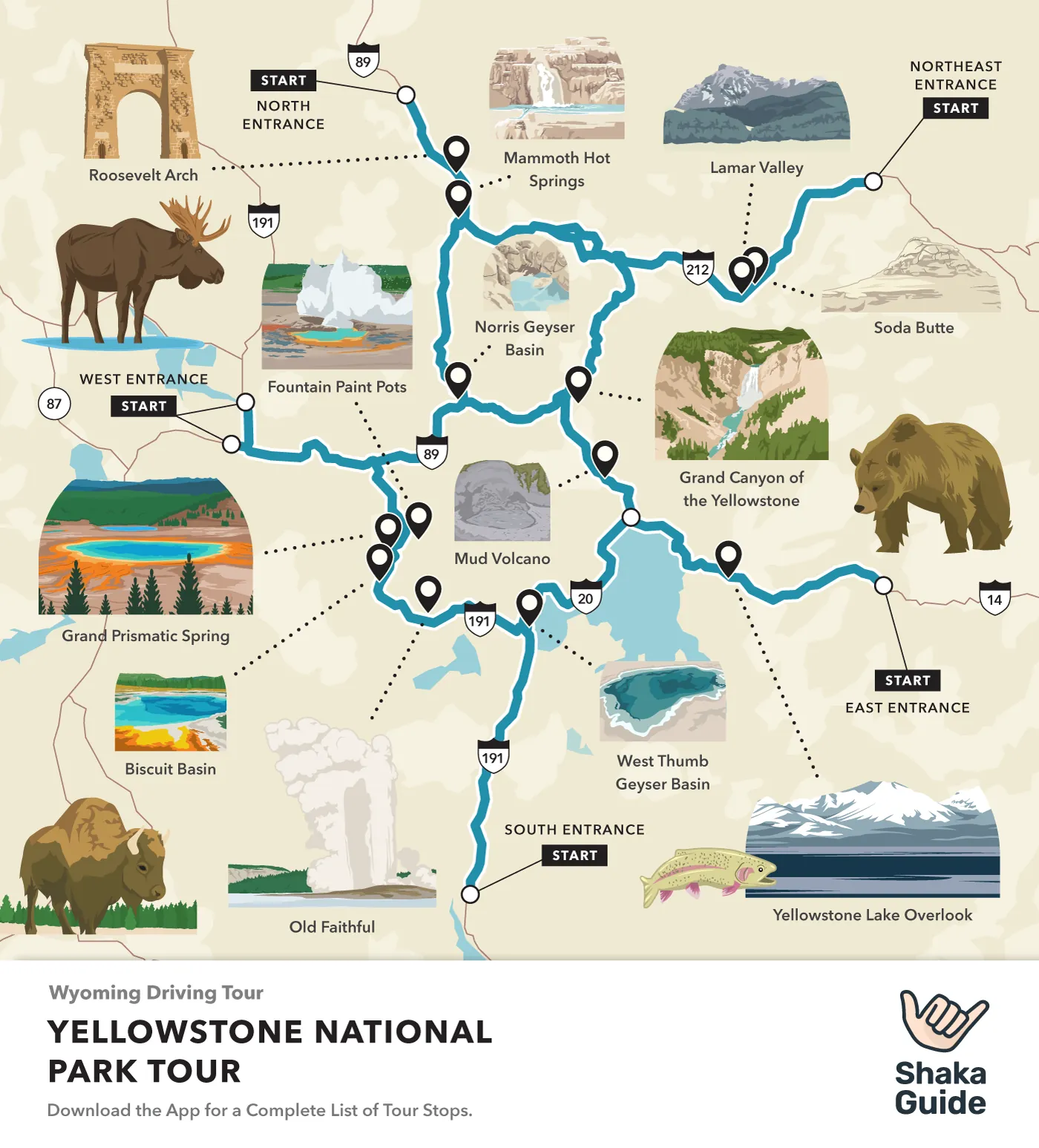
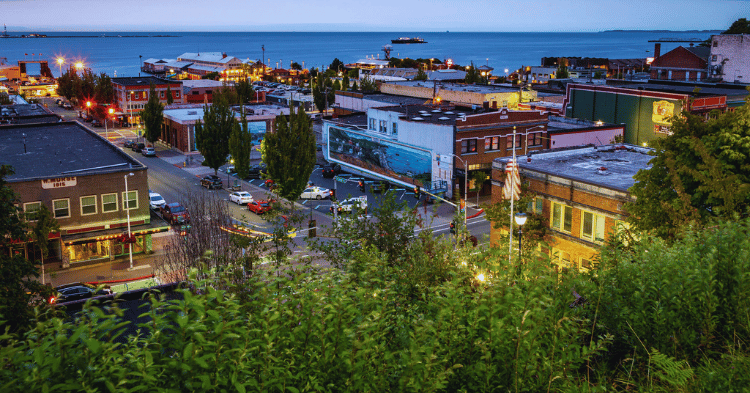
When planning your visit to Olympic National Park, choosing the right place to stay is crucial. The park spans several distinct regions, each with its unique charm. Here are the best options for accommodations:
Port Angeles
- Port Angeles serves as a gateway to Olympic National Park, especially if you plan to visit Hurricane Ridge and Lake Crescent. The city offers a variety of accommodations, including hotels, motels, and charming bed and breakfasts.
- Staying in Port Angeles allows you to efficiently follow a two-day itinerary covering top spots like Hurricane Ridge, Lake Crescent, Rialto Beach, and the Hoh Rainforest without spending too much time on daily travel.
Forks
- Forks, known for its remote vibe, offers easy access to the park’s western side, including the magnificent Hoh Rainforest and scenic Rialto Beach. This town is perfect for travelers keen on exploring the coastal and rainforest areas.
- Choosing Forks as your base lets you reverse a two-day itinerary, making it an excellent option if you prefer starting your day near the coast. It might be a bit more isolated, but the breathtaking natural surroundings make it worthwhile.
- Camping enthusiasts will find numerous campgrounds spread throughout Olympic National Park, providing a range of options from basic sites to ones with more amenities.
- For a more immersive experience, you can choose backcountry camping, which requires a permit and gives you the chance to connect deeply with nature. Popular campgrounds like Kalaloch, Hoh, and Mora provide ideal spots for setting up your tent while exploring different parts of the park.
- Booking in advance, especially during peak seasons, ensures that you secure a spot at your preferred campground. Always follow Leave No Trace principles to help preserve the park’s pristine beauty.
What to Pack for Olympic National Park
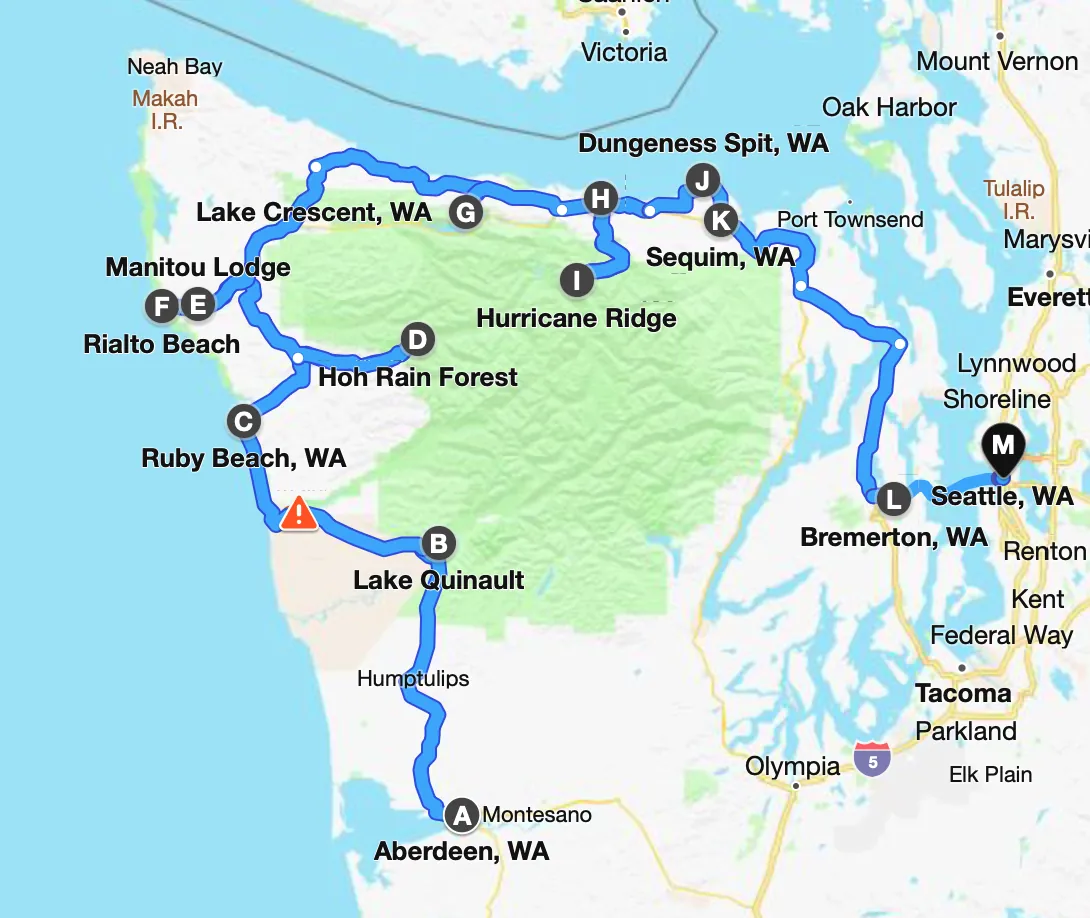
Packing the right gear for your adventure in Olympic National Park is crucial due to its diverse and often unpredictable weather. Here’s everything you need to pack for a seamless experience.
Essential Gear
- Clothing: Pack layers to adapt to sudden changes in weather. Bring waterproof jackets, insulated layers, and moisture-wicking clothing to stay comfortable and dry. Examples include fleece jackets, thermal tops, and quick-drying pants.
- Footwear: Sturdy hiking boots or trail shoes with excellent traction are essential for the park’s varied terrains. Brands like Merrell and Salomon offer reliable options.
- Backpack and Daypack: Use a comfortable backpack for longer hikes and a smaller daypack for shorter excursions. Look for padded straps and multiple compartments.
- Navigation Tools: Carry a map, compass, and GPS device. Alternatively, download GPS apps like AllTrails on your smartphone to help navigate the park’s vast areas.
- Winter Gear: If visiting in winter, pack thermal layers, snow boots, and crampons for icy trails. Don’t forget gloves and a warm hat.
- Summer Essentials: Sunscreen, sunglasses, and a wide-brimmed hat are must-haves in the summer. Bug spray and lightweight clothing will keep you comfortable.
- Rainy Season: Waterproof gear is imperative during the rainy season. A high-quality rain jacket and waterproof pants will keep you dry. Quick-drying socks are also beneficial.
Remember, being prepared with the right gear can make your trip to Olympic National Park not only safe but also more enjoyable. Enjoy the park’s breathtaking landscapes and diverse weather with confidence.
Olympic National Park Itinerary 3 Days
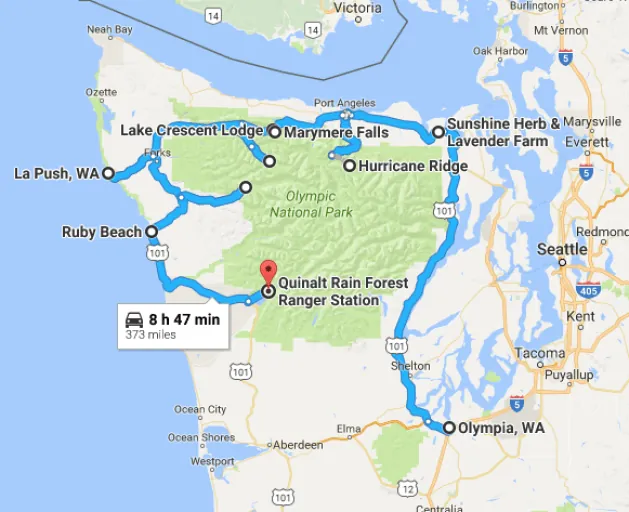
If you’re planning a trip to Olympic National Park, a 3-day itinerary is perfect for exploring its stunning landscapes. From misty rainforests to rugged coastlines and snow-capped peaks, there’s something for everyone. Let’s jump into a detailed plan for each day to ensure you make the most of your visit.
Day 1: Port Angeles and Hurricane Ridge
Morning: Port Angeles and Drive to Hurricane Ridge
- Start Your Day in Port Angeles: Begin your adventure in Port Angeles, the largest city near Olympic National Park. This bustling hub is perfect for stocking up on supplies and grabbing a hearty breakfast.
- Visit the Olympic National Park Visitor Center: Before heading out, stop by the Olympic National Park Visitor Center for any last-minute information. The rangers here provide invaluable tips and maps.
- Journey to Hurricane Ridge: The 17-mile drive from Port Angeles to Hurricane Ridge is an event in itself. You’ll encounter picturesque overlooks and pull-outs that offer breathtaking views.
- Key Stops Along the Way:
- Heart O’ The Hills Campground: Located just 5 miles from the park entrance, this campground is also the trailhead for the 3.7-mile Lake Angeles trail.
- Morse Creek Overlook: Pause here for sweeping views all the way into Canada.
- Switchback Trailhead: This 1.2-mile trail is a shortcut to Mt. Angeles’ peak, featuring a series of challenging switchbacks.
There’s no better way to kickstart your Olympic National Park itinerary than with the combined experiences of Port Angeles and Hurricane Ridge, ensuring a memorable Day 1.
Day 2: Lake Crescent and Sol Duc
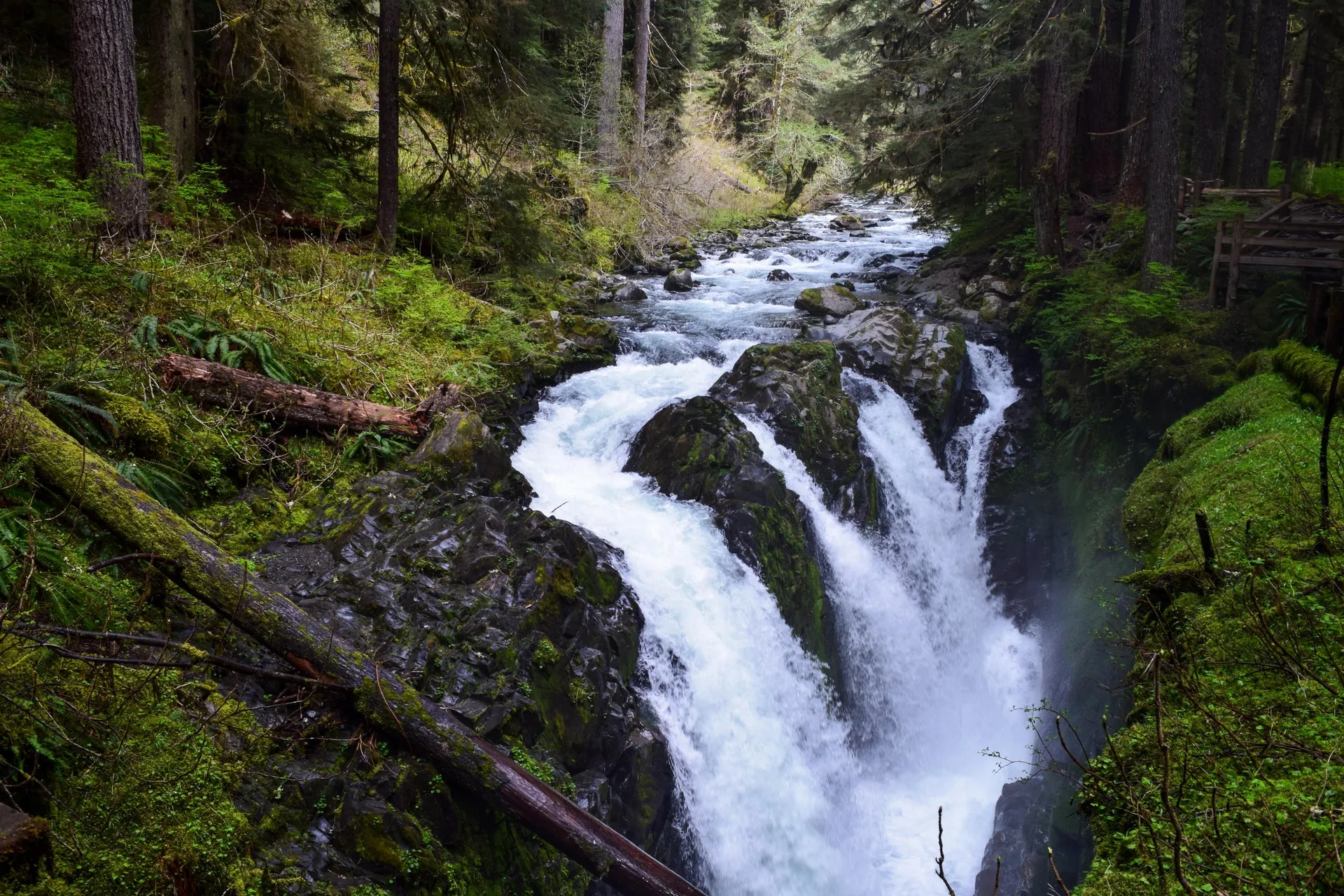
Focusing on the natural beauty and relaxed ambiance, Day 2 of your Olympic National Park itinerary promises adventure and tranquility. You’ll explore Lake Crescent, the enchanting Marymere Falls, and rejuvenate at Sol Duc Hot Springs Resort.
Lake Crescent
Lake Crescent, a large, deep lake in the park’s northeastern area, is known for its stunning crystal-clear waters. A drive around the lake offers breathtaking views, perfect for photo ops. You can also hike various trails, such as the Spruce Railroad Trail, offering lakeside paths through lush forests. Boating and kayaking are popular here, allowing you to experience the lake’s serene beauty up close. Don’t forget to visit the historic Lake Crescent Lodge for its charming ambiance and panoramic views.
Marymere Falls
Just a short distance from Lake Crescent, Marymere Falls is a must-visit. The 1.8-mile round trip hike takes you through a lush, fern-filled forest, making it a visually rewarding journey. The trail is well-maintained but includes steep wooden stairs as you get closer to the 90-foot waterfall. The effort is worth it, as the view of the cascading falls is spectacular. Morning hikes are ideal to avoid crowds and experience the falls in tranquility.
Sol Duc Hot Springs Resort
After your morning adventures, head to Sol Duc Hot Springs Resort for relaxation. The area includes the magnificent Sol Duc Falls, accessible by a 0.8-mile hike that’s perfect for all skill levels. Enjoy the sight and sound of the water crashing over rocky terrain in a pristine forest setting. Afterward, soak in the hot springs at the resort. The natural mineral waters are known for their therapeutic benefits, providing the perfect end to an active day. The resort also offers cozy cabins if you chose to spend the night close to nature.
Elevate your park experience with these prime destinations, blending physical activity with rejuvenation amidst nature’s splendor.
Day 3: Beaches and Hoh Rainforest
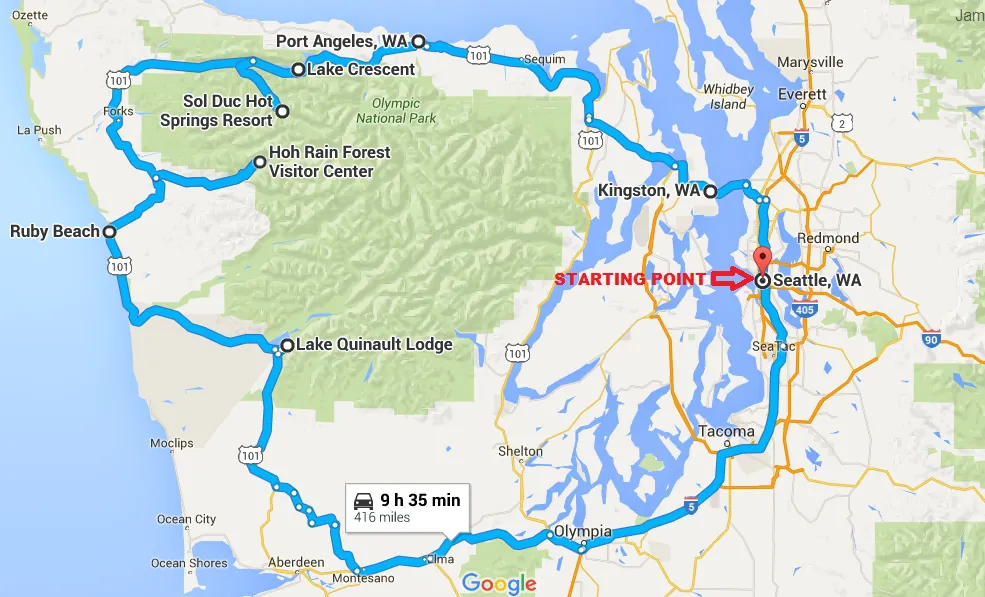
Rialto Beach
Rialto Beach, nestled on the Pacific Coast, is one of Olympic National Park’s most sought-after spots. You can savor breathtaking views and partake in several activities that cater to different interests.
- Location: Rialto Beach is located on the park’s western edge along the Pacific Ocean.
- Activities: Enjoy scenic hikes, with the 3.3-mile round trip to “Hole In The Wall” as a highlight. This geological marvel is accessible only at low tide. Camping and exploring unique geological features add to the experience.
- Tips: Arrive early to beat the crowds. Check tide schedules to ensure safe passage to “Hole In The Wall.” This beach offers stunning photo opportunities and is ideal for family outings.
La Push
Just a short drive from Rialto Beach, La Push is a charming coastal town near the Quileute Indian Reservation. It provides easy access to several pristine beaches renowned for their dramatic landscapes.
- Location: Located near the Quileute Indian Reservation, La Push is a hub for coastal adventures.
- Activities: Visit the First Beach, Second Beach, and Third Beach for unique seaside experiences. Each beach is known for striking sea stacks and intriguing tidepools. Second Beach, with its less crowded, scenic trail, is particularly well-loved for its sea stacks and tidepools.
- Tips: Wear sturdy shoes for the trails leading to Second and Third Beaches. Check tide charts to see the tidepools at their best and spot marine life.
Hoh Rainforest Visitor Center
Completing your day with a visit to the Hoh Rainforest offers a serene contrast to the rugged coastline. The Hoh Rainforest Visitor Center is a gateway to some of the lushest habitats in the park.
- Location: The visitor center is located within the heart of the Hoh Rainforest.
- Activities: Take leisurely walks or more strenuous hikes through this verdant rainforest. The Hall of Mosses Trail (0.8 miles) invites you into an otherworldly world adorned with moss-draped trees. The Spruce Nature Trail (1.2 miles) showcases the area’s diverse plant life.
- Tips: Bring waterproof clothing, as the rainforest is one of the wettest spots in the continental U.S. Complimentary maps and ranger programs available at the visitor center can enrich your experience.
Your third day in Olympic National Park is packed with diverse landscapes, from coastal beauty at Rialto Beach and La Push to the verdant canopy of the Hoh Rainforest, ensuring a memorable and enriching experience.
Additional Places to Explore
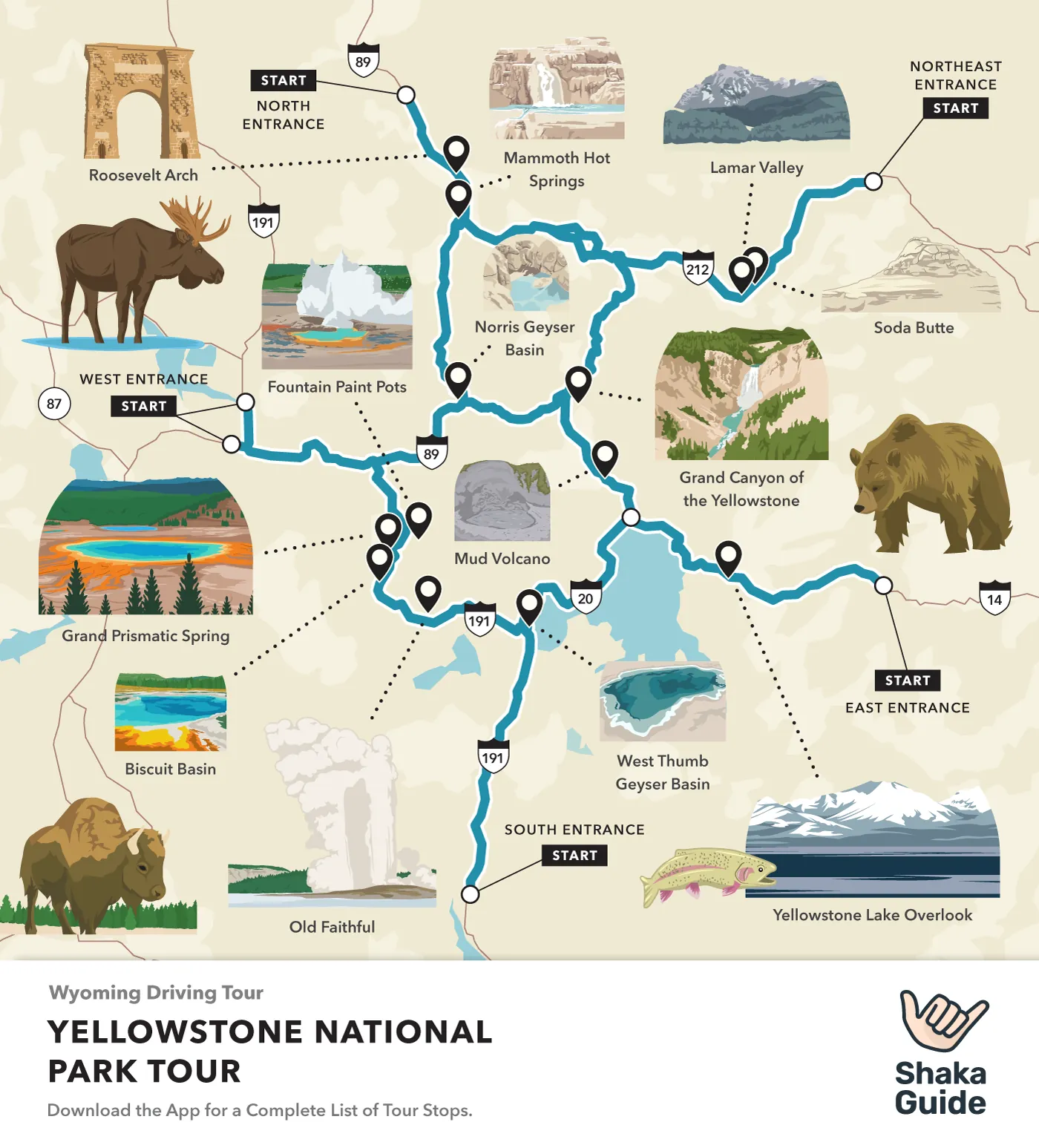
Exploring Olympic National Park offers endless possibilities. Here are more spots worth adding to your itinerary for their unique beauty and activities.
Ruby Beach and Kalaloch Beach
- Ruby Beach: Located on the park’s western coastline, Ruby Beach captivates with its dramatic sea stacks and driftwood-strewn shore. Best visited at low tide, you can explore tide pools teeming with starfish and anemones. For photographers, the sunsets here create picture-perfect scenes.
- Kalaloch Beach: Just south of Ruby Beach, Kalaloch Beach is famous for the “Tree of Life,” a tree suspended by its roots over a cave. Walk along the sandy shores or set up a picnic. This area is accessible year-round, though summer offers the best weather.
Lake Quinault
- Lake Quinault: Nestled in the Quinault Rainforest, this serene lake is an excellent spot for boating, fishing, and swimming. Surrounded by towering hemlocks and spruces, the lake’s trails, like the Quinault Loop Trail, provide easy hikes with stunning forest views.
- Quinault Rain Forest: Home to some of the largest Sitka spruce trees, the Quinault Rain Forest offers lush green landscapes and diverse wildlife. Hike the Big Spruce Tree Trail to see one of the world’s largest spruce trees.
- Lake Quinault Lodge: This historic lodge offers a cozy stay with lakeside views. Enjoy dining at the lodge’s restaurant, with local dishes like freshly-caught salmon.
- Neah Bay: At the northwestern tip of Washington state, Neah Bay is part of the Makah Indian Reservation. Visit the Makah Museum to learn about the tribe’s rich history and culture. Don’t miss the traditional grilled salmon at local eateries.
- Cape Flattery: The westernmost point in the contiguous U.S., Cape Flattery promises breathtaking ocean vistas. A 1.5-mile round trip hike leads to viewpoints overlooking sea caves and rugged cliffs. The best time to visit is during spring and summer for clear views.
- Hobuck Beach: Near Neah Bay, Hobuck Beach is perfect for surfing and camping. The beach is less crowded, providing a tranquil escape.
These additional places offer a mix of coastal beauty, serene lakes, and cultural experiences, making your trip to Olympic National Park even more memorable.
Frequently Asked Questions
How Many Days Do You Need in Olympic National Park?
You need at least 2 nights in Olympic National Park to cover main highlights. This allows you to visit Hurricane Ridge, the Pacific Coast, and the Hoh Rainforest. Ideally, spend 3 days or more to explore different regions like Ozette Lake, Cape Flattery, and Shi-Shi Beach. This extra time lets you appreciate the park’s diverse ecosystems.
What is the Best Way to Get Around Olympic National Park?
Driving is the best way to get around the park. The vast area of Olympic National Park, covering over 922,000 acres, makes a car essential. Public transportation is limited, so having your own vehicle is crucial. It lets you explore areas like Hurricane Ridge, the Hoh Rainforest, and coastal regions efficiently.
When to Visit Olympic National Park?
Each season offers unique experiences. Summer is great for hiking with warm temperatures and accessible trails but attracts larger crowds. Fall showcases stunning foliage and waterfalls with cooler weather and fewer visitors. Winter provides solitude and snowy landscapes perfect for a quiet retreat. Spring brings vibrant greenery, rejuvenated waterfalls, and blooming wildflowers. Plan your visit based on the season that matches your interests.
What Are the Entrance Fees?
The entrance fees for Olympic National Park help maintain its natural beauty. Various pass options are available. A 7-day vehicle pass costs $30, while a motorcycle pass is $25. For hikers or bikers, a $15 individual pass applies. Alternatively, you can purchase the America the Beautiful Annual Pass for $80, which grants access to all national parks.
What Should You Pack?
Packing the right gear is essential for a comfortable visit. Bring layers of clothing to adapt to the park’s unpredictable weather. Sturdy footwear is a must for hiking trails. Pack a waterproof jacket and thermal layers for colder months, and lighter, moisture-wicking clothes for summer. Don’t forget navigation tools like maps or GPS devices, as cell service can be spotty in remote areas. Being well-prepared ensures a safe and enjoyable experience in the park.
Concluding Thoughts
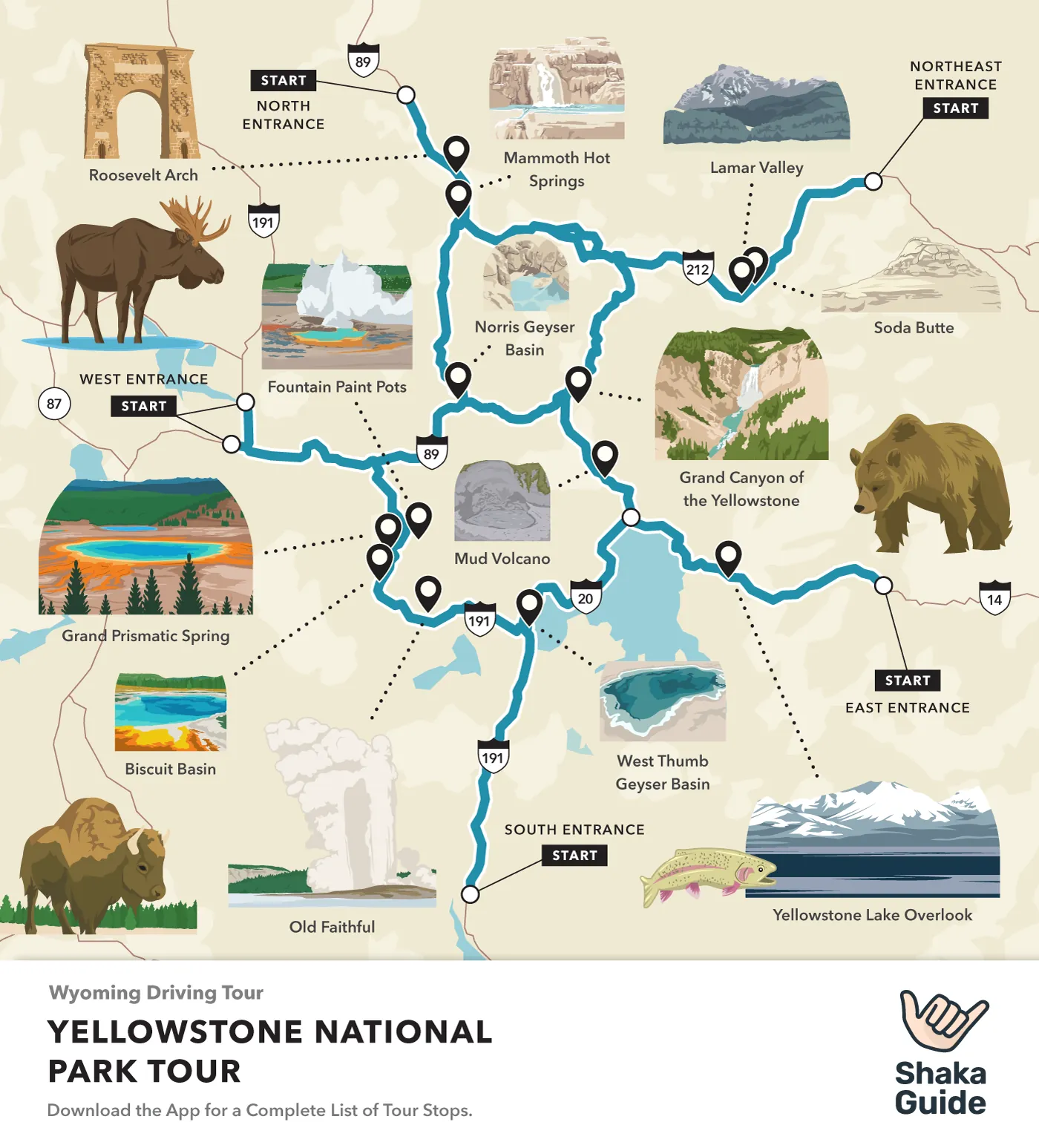
Olympic National Park offers a unique blend of natural beauty and diverse landscapes, making it a must-visit destination. Whether you’re drawn to its lush rainforests, rugged coastlines, or majestic mountains, there’s something for everyone. The park’s accessibility via various routes and its range of accommodation options ensure a comfortable and enjoyable trip.
Each season brings its own charm, making the park a year-round attraction. Remember to pack the right gear to stay comfortable and safe. A well-planned itinerary will help you make the most of your visit, allowing you to explore key highlights and hidden gems.
Prepare for an unforgettable adventure in Olympic National Park, where nature’s splendor awaits at every turn.
Frequently Asked Questions
Can you just drive through Olympic National Park?
No, there is no single road that loops through Olympic National Park. You must use U.S. Highway 101 to access different areas. U.S. 101 can be reached by taking I-5 south from Seattle, Tacoma, or SeaTac Airport to Olympia, Washington.
What is the best month to go to Olympic National Park?
The best months to visit Olympic National Park are from April to October. This period usually features warmer, drier weather, making it ideal for wildlife viewing and outdoor activities.
How many days do you need for Olympic National Park?
It’s recommended to stay between two and seven days to fully explore Olympic National Park. The park covers 922,641 acres with diverse ecosystems, so there’s plenty to see and experience.
How many waterfalls are in Olympic National Park?
Olympic National Park features about 25 waterfalls. Some are easily accessible by car or short hikes, while others require more effort. Plan ahead if you want to see multiple waterfalls.
How long does it take to drive all the way around Olympic National Park?
Driving around the Olympic Peninsula takes about eight hours without stops. However, you can easily spend days exploring the sights and trails within the park areas along the way.
What should I pack for a visit to Olympic National Park?
Pack layered clothing, sturdy footwear, and essential navigation tools. Waterproof jackets, thermal layers, and season-specific gear are recommended due to the park’s diverse and unpredictable weather.
Are there camping opportunities within Olympic National Park?
Yes, there are various camping options in Olympic National Park, from basic campgrounds to backcountry sites. Booking in advance and following Leave No Trace principles are highly encouraged.
What are the best accommodation options around Olympic National Park?
Port Angeles offers various lodging options and easy access to key attractions. Forks provides a more remote vibe, ideal for exploring coastal and rainforest areas. Both locations are convenient gateways to the park.
What is the best way to navigate Olympic National Park?
Driving is the best way to navigate Olympic National Park due to its vast size and limited public transportation. This allows you to explore different regions at your own pace.
Which seasons are best for visiting Olympic National Park?
Each season offers unique experiences: summer for warm hikes, fall for foliage and waterfalls, winter for snowy solitude, and spring for vibrant greenery and wildflowers. The park is a year-round destination.
How can I reach Olympic National Park?
You can reach Olympic National Park via car, air, or ferry. US Highway 101 offers scenic views, and the nearest airports are in Seattle and Port Angeles. Ferry options from Seattle also enhance accessibility.

